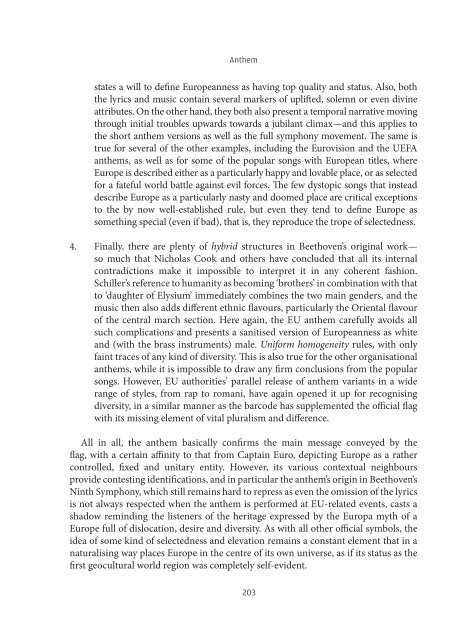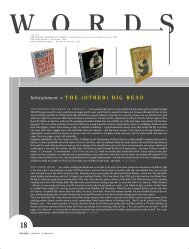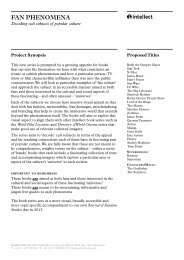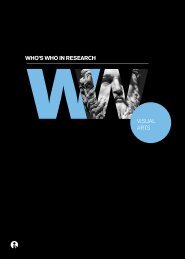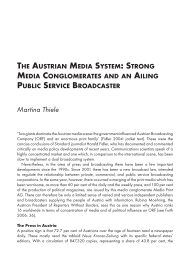Anthem - Intellect
Anthem - Intellect
Anthem - Intellect
You also want an ePaper? Increase the reach of your titles
YUMPU automatically turns print PDFs into web optimized ePapers that Google loves.
<strong>Anthem</strong><br />
states a will to define Europeanness as having top quality and status. Also, both<br />
the lyrics and music contain several markers of uplifted, solemn or even divine<br />
attributes. On the other hand, they both also present a temporal narrative moving<br />
through initial troubles upwards towards a jubilant climax—and this applies to<br />
the short anthem versions as well as the full symphony movement. The same is<br />
true for several of the other examples, including the Eurovision and the UEFA<br />
anthems, as well as for some of the popular songs with European titles, where<br />
Europe is described either as a particularly happy and lovable place, or as selected<br />
for a fateful world battle against evil forces. The few dystopic songs that instead<br />
describe Europe as a particularly nasty and doomed place are critical exceptions<br />
to the by now well-established rule, but even they tend to define Europe as<br />
something special (even if bad), that is, they reproduce the trope of selectedness.<br />
4. Finally, there are plenty of hybrid structures in Beethoven’s original work—<br />
so much that Nicholas Cook and others have concluded that all its internal<br />
contradictions make it impossible to interpret it in any coherent fashion.<br />
Schiller’s reference to humanity as becoming ‘brothers’ in combination with that<br />
to ‘daughter of Elysium’ immediately combines the two main genders, and the<br />
music then also adds different ethnic flavours, particularly the Oriental flavour<br />
of the central march section. Here again, the EU anthem carefully avoids all<br />
such complications and presents a sanitised version of Europeanness as white<br />
and (with the brass instruments) male. Uniform homogeneity rules, with only<br />
faint traces of any kind of diversity. This is also true for the other organisational<br />
anthems, while it is impossible to draw any firm conclusions from the popular<br />
songs. However, EU authorities’ parallel release of anthem variants in a wide<br />
range of styles, from rap to romani, have again opened it up for recognising<br />
diversity, in a similar manner as the barcode has supplemented the official flag<br />
with its missing element of vital pluralism and difference.<br />
All in all, the anthem basically confirms the main message conveyed by the<br />
flag, with a certain affinity to that from Captain Euro, depicting Europe as a rather<br />
controlled, fixed and unitary entity. However, its various contextual neighbours<br />
provide contesting identifications, and in particular the anthem’s origin in Beethoven’s<br />
Ninth Symphony, which still remains hard to repress as even the omission of the lyrics<br />
is not always respected when the anthem is performed at EU-related events, casts a<br />
shadow reminding the listeners of the heritage expressed by the Europa myth of a<br />
Europe full of dislocation, desire and diversity. As with all other official symbols, the<br />
idea of some kind of selectedness and elevation remains a constant element that in a<br />
naturalising way places Europe in the centre of its own universe, as if its status as the<br />
first geocultural world region was completely self-evident.<br />
203


